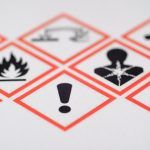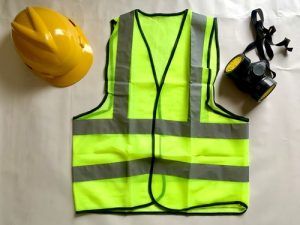
Guide to OHS Certificates and Safety Training
Across all industries, companies must place a high priority on workplace safety. A safe and healthy work environment is crucial for both the well-being of people and the success of organizations. OHS certifications are crucial in developing thorough safety standards and procedures in this situation. OHS certifications are essential tools for both businesses and individuals, with an emphasis on risk mitigation, accident prevention, and regulatory compliance.
As such, the team at Advanced CT would like to provide you with a guide to OHS certificates and safety training.
What is OHS?
OHS is an acronym that stands for Occupational Health and Safety. It is an area of research and work that concentrates on protecting people’s health, safety, and well-being at work. In order to prevent accidents, injuries, and occupational diseases, OHS comprises a variety of actions targeted at discovering, assessing, and minimizing workplace hazards.
The main objective of OHS is to establish a secure and healthy working environment for staff members, where risks are reduced and appropriate safety measures are taken. This is putting safety practices into effect, encouraging awareness and education about safety precautions, creating emergency response plans, and abiding by any rules and regulations.

Identifying hazards and evaluating risks are common OHS themes, as are ergonomics, chemical safety, fire safety, personal protective equipment (PPE), workplace violence prevention, and emergency response preparation.
Organizations that prioritize OHS can safeguard their workers, lower the number of occupational diseases and injuries, increase productivity, and foster a good workplace environment. OHS standards and regulations are set by governments and regulatory agencies across the world to provide companies with guidelines and legal obligations for protecting the health and safety of their employees.
Types of OHS Certificates
Various OHS credentials are available, depending on the industry, job function, and jurisdiction. Here are a few OHS certifications that are widely accepted:
OSHA 10-Hour or 30-Hour Outreach Training
These certifications offer fundamental training in occupational safety and health themes and are provided by the Occupational Safety and Health Administration (OSHA) in the United States. The 30-Hour training is more in-depth and appropriate for supervisors or employees with safety responsibilities, whereas the 10-Hour course is often for entry-level employees.
NEBOSH Certifications
Numerous qualifications from the National Examination Board in Occupational Safety and Health (NEBOSH) are accepted across the world. These address different industries and levels of OHS expertise and include the NEBOSH General Certificate, NEBOSH Construction Certificate, NEBOSH Fire Certificate, and others.
IOSH Managing Safely Certificate
The Managing Safely certificate, which is offered by the Institution of Occupational Safety and Health (IOSH), focuses on giving managers and supervisors the knowledge and abilities to manage workplace safety successfully.
COSHH Assessors Certificate
For the safe handling and management of hazardous materials, COSHH (Control of Substances Hazardous to Health) examinations are essential. The COSHH Assessors Certificate gives people the skills necessary to perform and evaluate COSHH evaluations.
CPR and First Aid Certifications
Certifications in first aid and CPR (Cardiopulmonary Resuscitation) are mandatory for everyone who must render emergency medical care in the case of a workplace injury or medical emergency.
Scaffold Safety Training
Workers who construct, dismantle, or work on scaffolding structures frequently need scaffold safety certifications. These certificates serve as proof that people have obtained the appropriate scaffold safety training.
Confined Space Entry Training
Workers who enter confined areas must get specialized training since these environments provide particular dangers and hazards. Individuals with certificates in restricted space entrance training are guaranteed to comprehend the dangers, safety measures, and protocols for conducting safe confined space operations.
Forklift Operator Certification
To avoid accidents and injuries, operating a forklift requires a certain set of skills and understanding. The ability to operate forklifts safely is guaranteed by forklift operator certification.
Purpose of OHS Certificates
OHS credentials serve a range of functions that all seek to advance workplace safety, legal compliance, and the improvement of people’s knowledge and abilities in occupational health and safety. The following are some major goals and advantages of OHS certificates:
Demonstrating Competence
OHS certifications offer verifiable proof that people have the knowledge and abilities needed to successfully execute safety procedures and standards. They demonstrate competence and subject-matter knowledge in occupational health and safety.
Regulatory Compliance
Regulations and regulatory requirements relevant to various sectors and countries exist in relation to workplace safety. OHS certifications serve as proof of adherence to these rules, guaranteeing that people and organizations satisfy the relevant requirements.

Improving Workplace Safety
OHS certifications give people access to information about workplace dangers, risk assessment methods, and preventative strategies. People help to create a safer work environment by putting the skills they learn via certification programs into practice.
Career Development
OHS certifications can improve employment chances and create new opportunities. Candidates that have the necessary qualifications are frequently given preference by employers since they show a dedication to safety and a greater degree of expertise. OHS certifications may support career advancement in the occupational health and safety industry and assist job seekers to stand out in cutthroat employment marketplaces.
Meeting Industry Standards
Due to the nature of the labour and dangers involved, several sectors, including construction, manufacturing, or healthcare, may have unique OHS standards. For some work tasks within these industries, certifications in specialist fields like scaffolding, restricted space entry, or chemical handling are frequently required.
Improving Organizational Reputation
Companies that invest in OHS education and certification show a dedication to the security and welfare of their workforce. With this dedication, they may demonstrate responsible and ethical behaviour and improve their reputation with stakeholders, clients, and workers.
Minimizing Risks and Accidents
People who have received the appropriate OHS training and certification are able to recognize workplace hazards, evaluate risks, and put preventative measures into place. The expenses and disruptions connected with accidents, injuries, and occupational diseases are decreased because of this information.
Ongoing Professional Development
OHS certifications aren’t fixed credentials. To make sure that people keep up with changing safety practices and requirements, many certificates call for renewal or continuing education. This supports ongoing education and career advancement in the area of occupational health and safety.
Why is Safety Training Important?
Safety training is a crucial factor that all companies need to consider, especially concerning OHS certifications, for some key reasons:
Emergency Preparedness and Response
Emergency planning and response procedures are included in safety training. People get knowledge on how to properly manage crises, including evacuations, first aid, fire safety, and situations involving hazardous materials. This information enables prompt and appropriate responses in urgent circumstances, potentially saving lives and reducing harm.

Employee Empowerment and Engagement
Employees are empowered by safety training because it equips them with the information and abilities to identify and handle safety issues. Engaged workers who actively participate in upholding a safe workplace contribute to a good safety culture and are more inclined to assume personal responsibility for their own well-being as well as that of their coworkers.
Reduction of Costs
Organizations may save a lot of money by investing in safety training. Businesses may save money by preventing accidents and injuries by avoiding the costs of medical care, worker compensation claims, equipment damage, production pauses, and legal penalties. A proactive step that encourages long-term financial stability is safety training.
Complying with OHS Certifications
Obtaining OHS certifications sometimes necessitates finishing particular safety training courses. Individuals complete the educational component of the certification process by completing the appropriate training, ensuring they have the knowledge and abilities required to achieve certification criteria.
Advanced CT – Leaders in Occupational Health and Safety
Prioritizing occupational health and safety is essential for the welfare of people and the success of organizations in today’s fast-paced work settings. OHS certifications attest to a person’s proficiency in applying safety precautions and adhering to legal requirements. Professionals who get these credentials improve their knowledge and abilities while also promoting a culture of safety in the workplace.
Are you prepared to raise the bar for workplace safety and provide your staff with thorough health and safety training? Advanced CT is the go-to resource you need to get in touch with for workplace health and safety. Please contact us to learn how our leading programs can help you achieve the necessary OHS credentials and arm your team with the know-how to guarantee a safe working environment.




